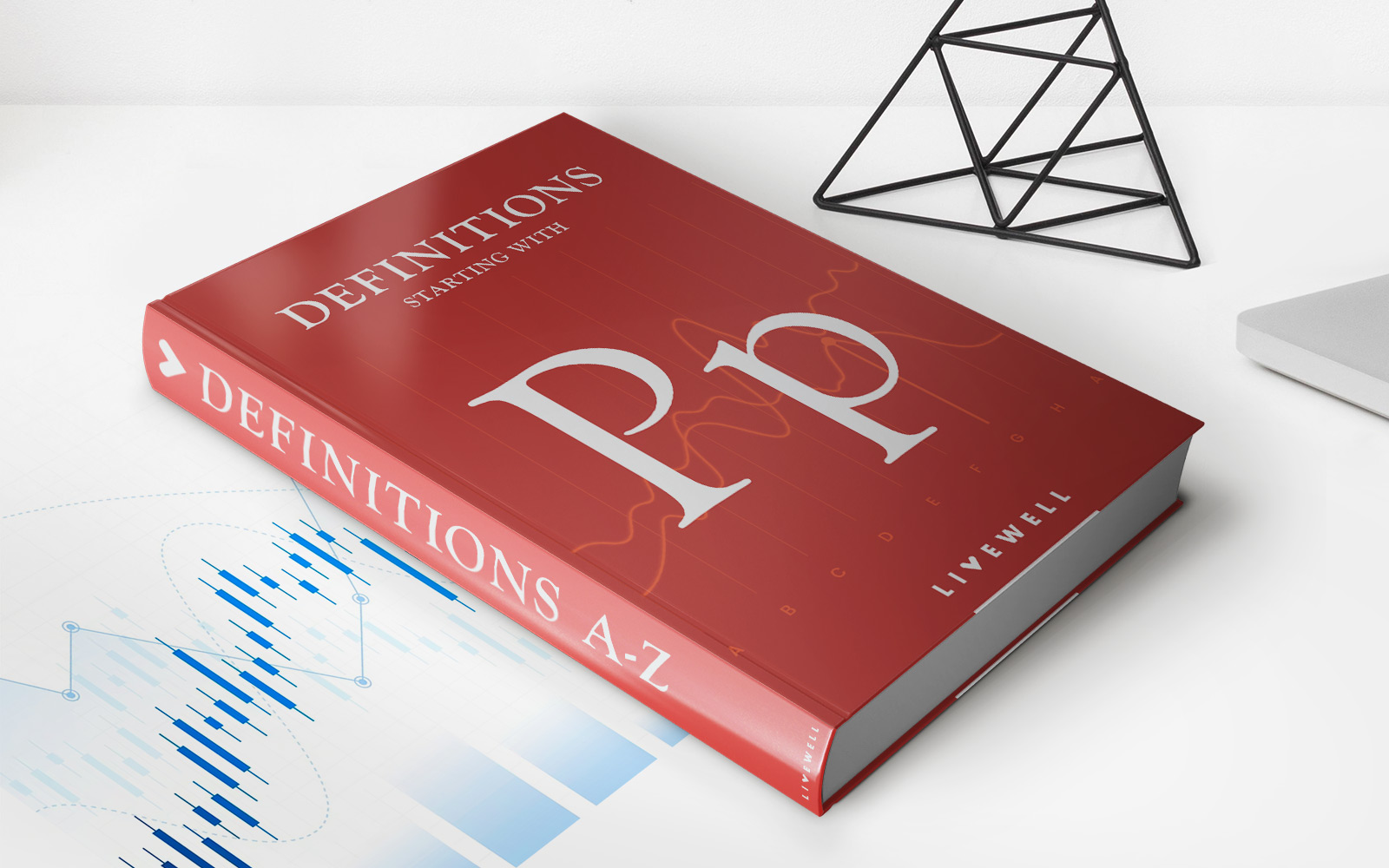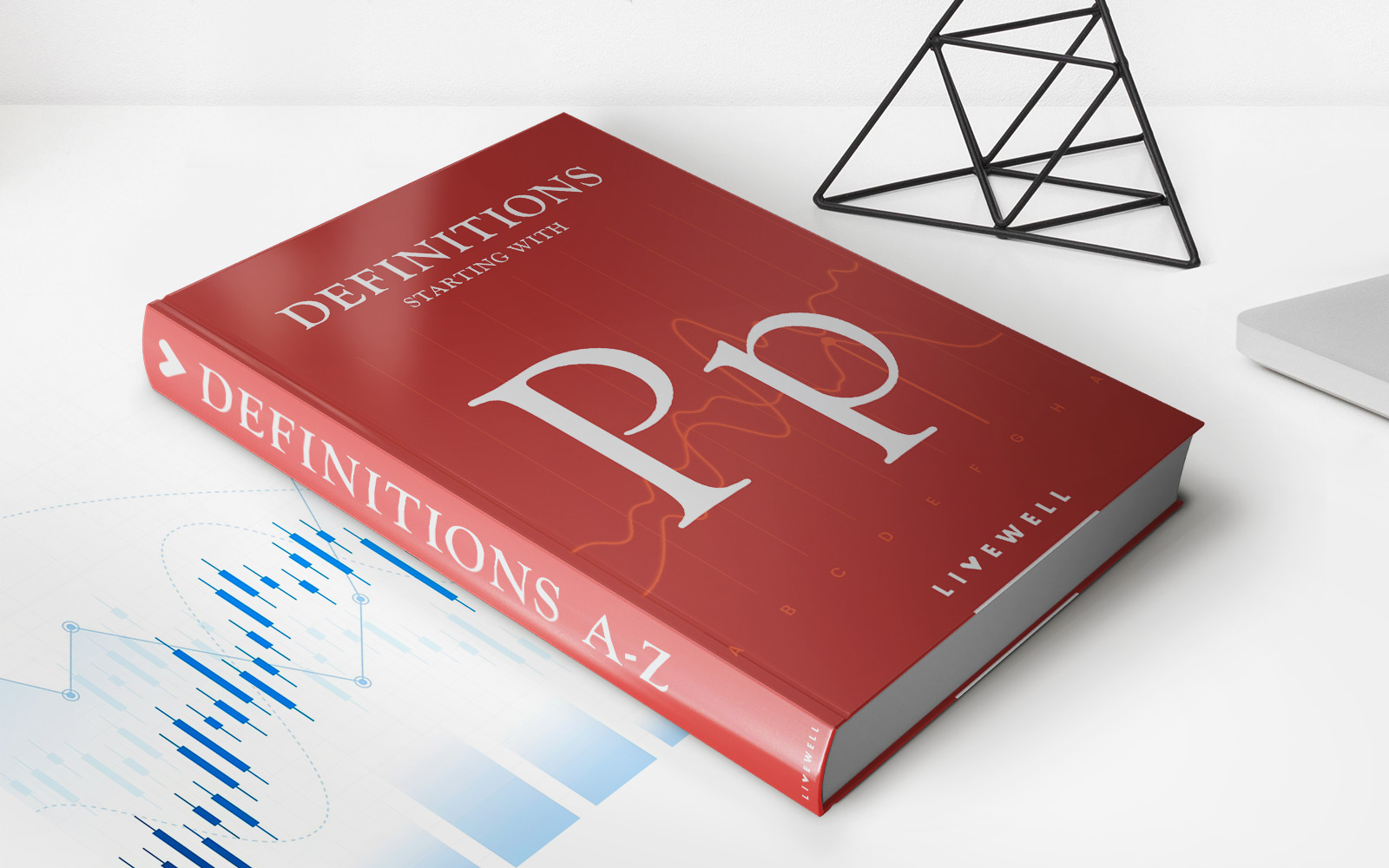

Finance
When Do You Apply For Student Loans
Published: January 19, 2024
Learn when to apply for student loans and secure your finances for higher education. Find out the best timing to ensure smooth funding throughout your academic journey.
(Many of the links in this article redirect to a specific reviewed product. Your purchase of these products through affiliate links helps to generate commission for LiveWell, at no extra cost. Learn more)
Table of Contents
- Introduction
- Understanding Student Loans
- Types of Student Loans
- When to Start Considering Student Loans
- Factors to Consider Before Applying
- How to Apply for Student Loans
- When to Apply for Student Loans
- Tips for Successful Student Loan Applications
- Common Mistakes to Avoid when Applying for Student Loans
- Conclusion
Introduction
Applying for student loans is often a necessary step for many individuals pursuing higher education. As the cost of college continues to rise, scholarships and grants may not cover all of the expenses, leading students and their families to seek financial assistance through student loans.
Student loans are financial tools designed to help students pay for tuition, books, housing, and other educational expenses. They can offer flexible repayment options and competitive interest rates, making them an attractive option for individuals looking to fund their education.
Understanding the different types of student loans, knowing when to start considering them, and learning how to apply successfully can make the process less daunting. By making informed decisions and avoiding common mistakes, students can better manage their finances and avoid unnecessary debt.
In this article, we will delve into the various aspects of student loans, including the types available, factors to consider before applying, when to start considering them, the application process, tips for successful applications, and common mistakes to avoid. By the end, you will have a comprehensive understanding of student loans and will be better equipped to navigate the financial aspect of your education.
Remember, the journey to higher education should be exciting, and student loans can provide the necessary resources to make your dreams come true. Understanding the ins and outs of the application process will allow you to embark on this adventure with confidence and peace of mind.
Understanding Student Loans
Student loans are a type of financial aid specifically designed to help students cover the costs associated with their education. Unlike scholarships or grants, which do not require repayment, student loans must be paid back, typically with interest, over a set period of time.
There are two main types of student loans: federal student loans and private student loans. Federal student loans are issued by the government and tend to offer more favorable terms such as fixed interest rates and flexible repayment options. Private student loans, on the other hand, are provided by private lenders and often have higher interest rates and less flexible repayment terms.
When considering student loans, it’s important to carefully review and understand all the terms and conditions. Be sure to examine interest rates, repayment options, and any potential fees associated with the loan. It’s crucial to borrow only what you need and to have a clear plan for repayment after graduation.
One of the advantages of federal student loans is that they typically offer deferment and forbearance options, which allow borrowers to temporarily pause or reduce their loan payments in certain situations, such as financial hardship or returning to school for further education.
As with any financial commitment, it’s important to carefully consider the long-term impact of taking out student loans. While they can provide access to education and open doors to better career opportunities, they also come with the responsibility of repayment. Understanding the terms and conditions, as well as assessing your ability to manage the debt, is essential before making a decision.
By gaining a thorough understanding of student loans and their implications, you can make informed decisions about your financial future and pursue your educational goals with confidence.
Types of Student Loans
When it comes to financing your education, there are various types of student loans available. Understanding the differences between them can help you make informed decisions about which option is best suited to your needs. Here are the main types of student loans:
- Federal Student Loans: These loans are funded by the U.S. Department of Education and are available to eligible students. The two main types of federal student loans are Stafford Loans, which can be subsidized (based on financial need) or unsubsidized (not based on financial need), and PLUS Loans, which are available to graduate students or parents of dependent undergraduate students. Federal student loans typically offer lower interest rates and more flexible repayment options compared to private loans.
- Private Student Loans: Private student loans are funded by banks, credit unions, and other private lenders. They usually have higher interest rates compared to federal loans and may require a credit check or a co-signer. Private student loans are a viable option for students who have exhausted all federal loan options or need additional funding beyond what federal loans can provide.
- State Student Loans: Some states offer their own student loan programs to residents. These loans may have specific eligibility requirements and often have terms and conditions that vary from federal loans. State student loans can be a valuable option for students who want to take advantage of specific benefits or incentives offered by their state.
- Institutional Loans: Some colleges and universities offer institutional loans to their students. These loans are typically provided directly by the educational institution and may have unique terms and conditions. It’s important to carefully review the terms and compare them with other loan options before making a decision.
It’s worth noting that federal student loans should generally be explored first, as they often offer more favorable terms and options. However, if federal loans do not cover all of your educational expenses, or if you do not meet the eligibility requirements, private or institutional loans can be considered as additional financing options.
Before deciding on a loan type, carefully consider the interest rates, repayment terms, and available benefits associated with each option. It’s also crucial to assess your financial situation and ability to repay the loan upon completion of your education.
By understanding the various types of student loans, you can make informed decisions about which loan is most suitable for your needs and ultimately secure the necessary financial resources to pursue your educational goals.
When to Start Considering Student Loans
When it comes to planning for your education, it’s never too early to start considering student loans. It’s important to understand the timeframe associated with the loan application process and to begin exploring your options well in advance. Here are some key points to consider:
Early Research: As you start researching potential colleges or universities, it’s essential to understand their tuition costs and the financial aid options available. This information can help you gauge the potential gap between your available resources (such as savings, scholarships, grants, and family contributions) and the total cost of attendance.
Filing the FAFSA: The Free Application for Federal Student Aid (FAFSA) is a crucial step in determining your eligibility for federal financial aid, including student loans. The FAFSA becomes available on October 1 each year, and it’s recommended to submit it as soon as possible to maximize your chances of receiving aid. Starting the process early allows you to gather the necessary documentation and complete the application accurately.
Understanding Financial Aid Packages: Once you receive your financial aid packages from colleges or universities, carefully review the details. This includes grants, scholarships, work-study opportunities, and loans. Understanding the breakdown of the aid package will help you determine if additional funding is needed and whether student loans will be part of your financial plan.
Considering Savings: If you or your family has been saving for college expenses, it’s important to evaluate how much of your savings you’re comfortable allocating towards tuition and other educational costs. This assessment can help you determine how much you may need to borrow in student loans.
Exploring Other Options: In addition to student loans, there may be alternative financing options available. This includes employer tuition reimbursement programs, state grants or scholarships, and private scholarships. Researching and applying for these opportunities can help reduce your reliance on student loans.
Consulting with Financial Aid Advisors: It’s advisable to meet with a financial aid advisor at your chosen institution or seek guidance from a trusted financial professional. They can provide personalized advice based on your specific circumstances and help you navigate the student loan application process.
Starting to consider student loans early allows you to fully understand your financial situation and explore various funding options. It also gives you ample time to gather all the necessary information and make informed decisions. Remember, being proactive and well-informed about your financial plan will help you achieve your educational goals while minimizing unnecessary debt and financial stress.
Factors to Consider Before Applying
Before applying for student loans, it’s crucial to take the time to carefully consider various factors to ensure you make the best decision for your financial future. Here are some key factors to consider:
Cost of Education: Take into account the overall cost of your education, including tuition, fees, books, housing, and other expenses. Understanding the total amount you will need to borrow can help you assess your repayment options and develop a realistic budget.
Repayment Plan: Evaluate different repayment plans offered by lenders and determine which one aligns with your financial capabilities. Consider factors such as the length of the repayment period, monthly payment amounts, and any potential interest rate reductions or forgiveness programs.
Interest Rates: Compare the interest rates offered by different lenders for both federal and private student loans. Keep in mind that federal loans generally have fixed interest rates, while private loan rates may vary based on your creditworthiness and the lender’s terms.
Loan Terms and Conditions: Carefully review the terms and conditions of each loan, including any fees, grace periods, and potential penalties for early repayment. Look for any hidden costs or clauses that may impact your ability to manage the loan effectively.
Financial Aid Eligibility: Understand the eligibility criteria for federal grants, scholarships, and work-study programs before resorting to student loans. Maximize your financial aid opportunities, as these do not require repayment.
Loan Limits: Be aware of the borrowing limits for both federal and private student loans. Borrow only what is necessary to cover your educational expenses, as excessive borrowing can lead to financial strain after graduation.
Future Income Potential: Consider your chosen field of study and the potential income you may earn upon graduation. Research average salaries and job prospects to assess your ability to repay your loans comfortably.
Financial Responsibility: Take into account your current financial situation, as well as any other existing debts or financial commitments. Evaluate whether you can manage loan repayments alongside your other financial obligations.
Seeking Professional Advice: If you have any concerns or uncertainties regarding student loans, consider consulting with a financial advisor or a student aid counselor who can provide personalized guidance based on your circumstances.
By carefully considering these factors before applying for student loans, you will be better equipped to make informed decisions about your education financing. Remember, taking the time to evaluate these factors can help you minimize debt, manage your finances effectively, and set yourself up for long-term financial success.
How to Apply for Student Loans
When it comes to applying for student loans, there are several steps you need to follow to ensure a smooth and successful application process. Here is a step-by-step guide on how to apply for student loans:
Step 1: Complete the FAFSA: Start by completing the Free Application for Federal Student Aid (FAFSA). This form is used to determine your eligibility for federal financial aid, including grants, scholarships, work-study, and loans. The FAFSA can be completed online at fafsa.ed.gov and should be submitted as soon as possible.
Step 2: Gather Documents: Before starting your loan application, gather the necessary documents such as your Social Security number, driver’s license, and tax returns. You may also need your parents’ tax returns if you are considered a dependent student.
Step 3: Research Loan Options: Take the time to research and compare loan options. Understand the terms and conditions, interest rates, repayment plans, and any additional fees associated with each loan option. This will help you make an informed decision about which loans to apply for.
Step 4: Complete Loan Applications: Once you have determined which loans you want to apply for, complete the loan applications. For federal student loans, you can complete the Master Promissory Note (MPN) and Entrance Counseling online. Private student loan applications can typically be completed online as well.
Step 5: Review and Accept Loan Offers: After submitting your loan applications, carefully review any loan offers you receive. Take note of the loan amount, interest rate, and repayment terms. Accept the loan offer that best fits your needs and educational goals.
Step 6: Complete Loan Entrance Counseling: For first-time borrowers of direct loans, you may be required to complete Loan Entrance Counseling. This educational session provides you with essential information about your loan responsibilities and obligations.
Step 7: Sign the Loan Agreement: Once you have reviewed and accepted the loan offer, you will need to sign a loan agreement or promissory note. This legally binding document outlines the terms of your loan and your agreement to repay the borrowed funds.
Step 8: Disbursement of Funds: Once all the necessary paperwork is completed, your loan funds will be disbursed. Funds are typically sent directly to your school, which will apply the funds to your tuition, fees, and other educational expenses. Any remaining funds will be issued to you for other educational costs.
Step 9: Loan Repayment: After you graduate or drop below half-time enrollment, your student loan will typically enter a grace period before repayment begins. During this time, prepare for repayment by creating a budget and familiarizing yourself with the available repayment options. Understand the requirements for each repayment plan and choose one that best suits your financial situation.
Step 10: Maintain Communication: Throughout the repayment process, it’s important to stay in contact with your loan servicer or lender. Notify them of any changes in your contact information or financial circumstances, and address any questions or concerns you may have about your loan.
By following these steps and staying organized throughout the process, you can successfully apply for student loans and secure the necessary funding to pursue your education. Remember to carefully review the terms and conditions of each loan before accepting the funds and make a plan for responsible loan repayment.
When to Apply for Student Loans
Timing is a crucial factor when it comes to applying for student loans. To ensure a smooth process and maximize your chances of receiving financial assistance, it’s important to be aware of the recommended timeline. Here are some key points to consider:
Understand Deadlines: Research and familiarize yourself with the application deadlines for both federal and private student loans. Missing these deadlines could result in a delay or even a loss of financial aid opportunities.
Apply as Early as Possible: It is recommended to start the loan application process as early as possible. For federal student loans, this means completing the Free Application for Federal Student Aid (FAFSA) as soon as it becomes available on October 1. Private loan applications should also be submitted well in advance to allow for processing time.
Prioritize Federal Loans: Federal student loans tend to offer more favorable terms and benefits compared to private loans. Therefore, it’s generally advised to prioritize applying for federal loans first before considering private financing options.
Consider Academic Year: Keep in mind that student loans are typically awarded on an academic year basis. It’s important to plan accordingly and apply for loans that cover the full academic year or specific terms as needed.
Factor in Financial Aid Award Letters: Once you receive financial aid award letters from colleges or universities, review them carefully. These letters outline the financial aid package you’re eligible for, including any grants, scholarships, work-study programs, and federal loans. Evaluate your options and consider whether additional private loans are necessary.
Be Mindful of Loan Disbursement Dates: Take note of the loan disbursement dates set by your school. Loans are typically disbursed directly to the school, which applies the funds to your tuition and fees before releasing any remaining balance to you. Plan your finances accordingly to cover other expenses until the loan disbursement date.
Consider Special Circumstances: If there are any special circumstances that may impact your financial situation, such as significant life changes or unforeseen events, it’s important to reach out to your school’s financial aid office. They can provide guidance on how to proceed and may be able to offer additional assistance or alternative financing options.
Stay in Communication: Throughout the application process, it’s important to stay in communication with your chosen schools, loan servicers, and lenders. Keep track of any requested documents or additional information they may require. Promptly respond to any communication to ensure a timely resolution.
Applying for student loans at the appropriate time is crucial to secure the necessary funding for your education. By understanding the deadlines, prioritizing federal loans, and staying organized throughout the process, you can improve your chances of receiving financial aid and ensure a smooth transition into your academic journey.
Tips for Successful Student Loan Applications
When applying for student loans, there are several strategies you can employ to increase your chances of a successful application. Here are some tips to help you navigate the process:
1. Start Early: Begin researching and gathering information about student loans well in advance. This will allow you ample time to compare options, understand requirements, and complete the necessary paperwork.
2. Read and Understand Requirements: Carefully review the eligibility criteria and loan requirements for each type of loan you are considering. This includes understanding the minimum credit score, income requirements, and documentation needed for the application.
3. Complete the FAFSA: Fill out the Free Application for Federal Student Aid (FAFSA) accurately and promptly. Submitting the FAFSA early will give you a better chance of receiving federal aid, including low-interest student loans.
4. Explore Federal Loan Options First: Federal student loans often have more favorable terms and repayment options compared to private loans. Exhaust all federal loan options before considering private loans.
5. Research and Compare Loan Options: Take the time to research different lenders and loan products. Compare interest rates, repayment terms, and borrower benefits to find the loan that best suits your needs.
6. Complete Applications Carefully: Pay close attention to detail when completing loan applications. Provide accurate and thorough information to avoid delays or rejections.
7. Establish a Good Credit History: If applying for private loans, having a good credit score can increase your chances of approval and may help you secure a lower interest rate. If you have a limited credit history, consider adding a cosigner to your application.
8. Don’t Borrow More Than You Need: Only borrow the amount you need to cover your educational expenses. It’s important to keep your loan balance manageable and avoid unnecessary debt.
9. Consult with a Financial Aid Advisor: Seek guidance from a financial aid advisor at your educational institution. They can provide valuable insights and help you make informed decisions about loan options, repayment plans, and managing your finances.
10. Keep Track of Deadlines: Stay organized and aware of all application deadlines. Missing a deadline can result in missed opportunities for financial aid.
11. Maintain Communication: Stay in contact with your loan servicer or lender throughout the process. Notify them of any changes to your contact information or financial circumstances, and address any questions or concerns promptly.
12. Keep Copies of All Documentation: Make copies of all completed applications, loan agreements, and correspondence. This will help you keep track of important information and serve as a reference in the future.
By following these tips, you can improve your chances of a successful student loan application. Remember to stay organized, be proactive, and seek guidance when needed. With careful planning and preparation, you can secure the financial assistance you need to pursue your educational goals.
Common Mistakes to Avoid when Applying for Student Loans
When applying for student loans, it’s important to be aware of common mistakes that can negatively impact your application process or result in unfavorable loan terms. Here are some common mistakes to avoid:
1. Failing to Submit the FAFSA: Many students mistakenly assume they won’t qualify for financial aid and skip filling out the Free Application for Federal Student Aid (FAFSA). However, submitting the FAFSA is essential for determining eligibility for federal loans, grants, and work-study programs. Always complete the FAFSA to explore all available financial aid options.
2. Not Researching Loan Options: A common mistake is not fully exploring loan options and simply accepting the first loan offer received. Take the time to research different lenders, interest rates, repayment terms, and borrower benefits. Comparing multiple loan options can help you find the most favorable terms.
3. Borrowing More Than Necessary: It can be tempting to borrow more than you actually need to cover educational expenses, especially when loans are readily available. However, borrowing excessively can lead to unnecessary debt and financial strain later on. Only borrow what is necessary to avoid future repayment challenges.
4. Ignoring Loan Terms and Conditions: Carefully review all loan terms and conditions before accepting any loan offers. Ensure you understand the interest rates, repayment timelines, and any potential fees associated with the loan. Ignoring these details can lead to surprises down the line.
5. Missing Deadlines: Missing application deadlines can result in missed opportunities for financial aid. Keep track of all deadlines and submit applications on time to maximize your chances of receiving funding.
6. Not Seeking Financial Aid Guidance: Many students fail to seek guidance from financial aid advisors before applying for loans. These professionals can provide valuable insights, help you understand the loan process, and offer advice specific to your financial situation. Reach out to your school’s financial aid office for assistance.
7. Overlooking Repayment Plans: Failure to fully research and understand repayment plans can lead to unexpected challenges during loan repayment. Take the time to explore the various repayment options available, such as income-driven repayment plans or loan forgiveness programs. Understanding these details will help you plan for successful loan repayment.
8. Not Paying Attention to Grace Periods: Many loans offer a grace period after graduation before repayment begins. Failing to understand the specifics of this period can lead to missed payments or misunderstanding the timeline for loan repayment. Be aware of when your repayment obligations will start.
9. Disregarding the Impact of Interest: Interest can significantly affect the overall cost of your loan. Be mindful of the interest rates associated with each loan option and consider how they will impact your repayment obligations. Opt for loans with lower interest rates whenever possible.
10. Mismanaging Loan Disbursements: It is essential to use your loan funds responsibly. Avoid using the loan money for non-educational purposes and carefully budget your expenses to ensure you have enough to cover your educational needs throughout the loan period.
By avoiding these common mistakes, you can navigate the student loan application process more effectively and set yourself up for a successful repayment journey. Stay informed, be proactive, and seek guidance when needed to make the most of your educational financing options.
Conclusion
Applying for student loans can be an overwhelming process, but with proper planning and understanding, you can navigate it successfully. By taking advantage of the various types of student loans available, considering factors such as cost, repayment plans, and interest rates, and applying at the right time, you can secure the necessary funding to pursue your educational goals.
Remember to research and compare loan options, prioritize federal loans before exploring private options, and complete the required applications accurately and on time. Avoid common mistakes such as failing to submit the FAFSA, borrowing more than necessary, and disregarding loan terms and conditions. Seek guidance from financial aid advisors and stay organized throughout the process.
Additionally, it’s crucial to have a realistic plan for loan repayment and understand the impact of interest rates and repayment terms. Strive to borrow only what you need and explore repayment options that work best for your financial situation.
Applying for student loans should be approached with careful consideration and a focus on long-term financial success. By making informed decisions, being proactive, and staying financially responsible, you can minimize debt, manage your loans effectively, and set yourself up for a bright future after graduation.
Remember, student loans are a valuable tool that can provide access to education and open doors for your career. With careful planning and thoughtful decision-making, you can make the most of your loan opportunities and achieve your educational aspirations with financial confidence.














